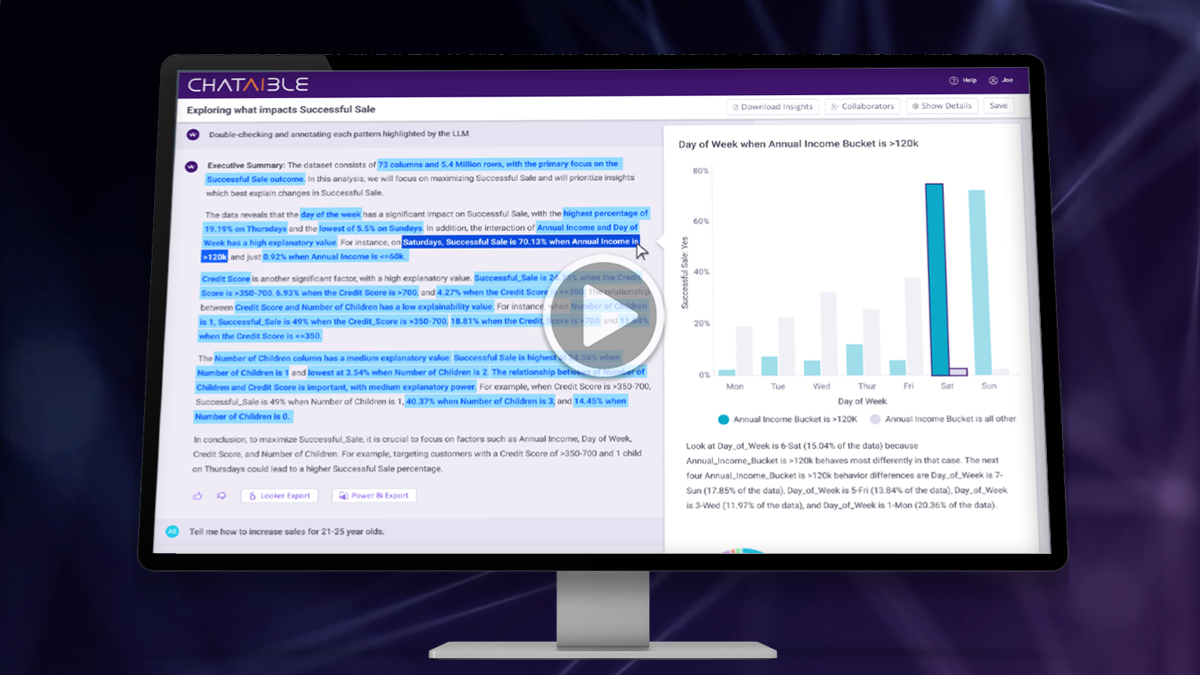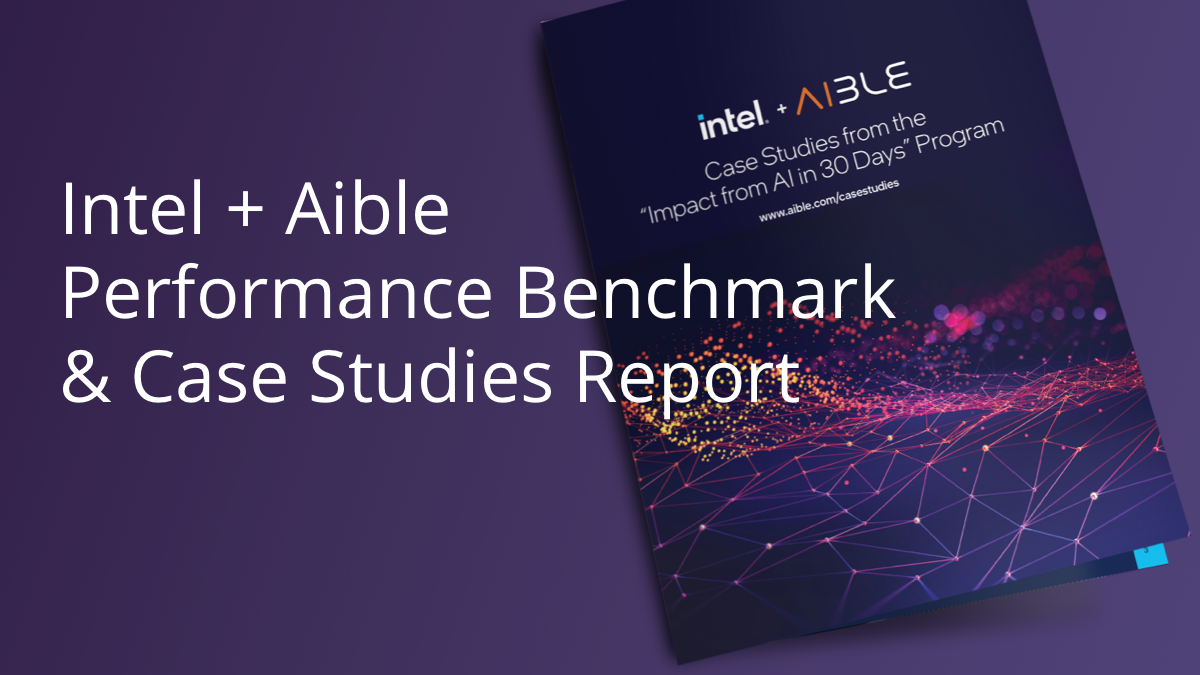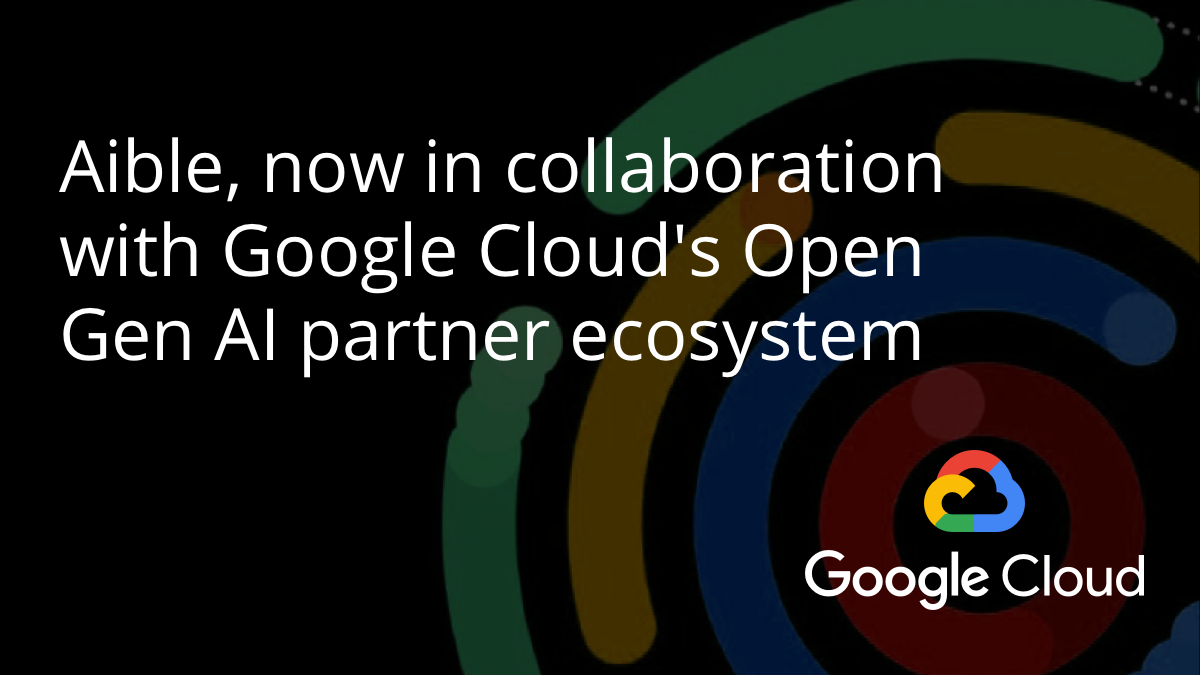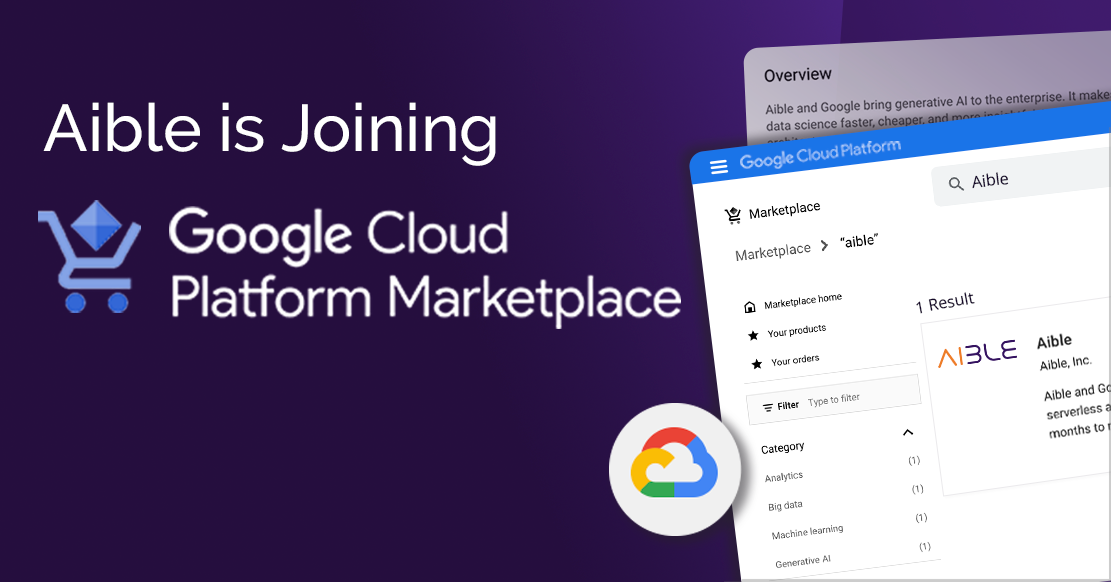Posted by Aible ● Dec 14, 2020 2:13:26 PM
7 Principles of Successful AI

According to a 2020 survey by MIT-Sloan and the Boston Consulting Group, only 10% of companies report seeing any financial gains from their AI investments. Too often, AI fails to follow fundamental principles that ensure that AI solves critical business problems and delivers sustained impact.
However, AI can be a game-changing competitive advantage for business – if it’s done right. Here are 7 principles of successful AI:
1. ROI-optimized-AI is essential to drive impact and execution at scale
AI must be trained and optimized to deliver ROI. Period. Too often, AI is trained on the wrong thing – model accuracy – rather than what’s really important: business impact and ROI. Depending on the unique goals of the business, that could mean increased revenue, lower costs, fewer customers lost to churn, higher manufacturing quality, lower waste and fraud, or better data-driven resourcing decisions in the face of economic uncertainty.
An AI trained on model accuracy rather than business impact assumes that all costs and benefits are equal. But that’s never true in business. Different customers and opportunities have different values to the business Also, capacity constraints matter. The size of your sales force, marketing budget, or warehouse capacity are critical limitations unique to your business, and AI has to factor in those important business realities. Understanding the business problem that you’re trying to solve and your unique needs and resources enables you to train AI to deliver ROI – now and in the future.
2. Flexibility is critical for AI to anticipate change and adjust quickly to shifting market conditions
AI cannot be static, especially when the world is changing rapidly and when end users have different preferences for what they expect out of AI models. For AI projects to be successful, AI has to have built-in build flexibility.
As market conditions change, the optimal AI needs to change. It shouldn’t require expensive and time-consuming model retraining. The best AI trains a frontier of many models so that businesses always use the right model at the right time, rather than adopting a single and often fragile one that limits you with rigid recommendations. Different users might want to have different kinds of AI – some may want a more aggressive AI, while others might prefer a more conservative model based on their unique needs. AI has to be able to support those individual preferences with built-in flexibility and customization.
3. Collaboration drives rapid prototyping and AI adoption
Successful AI is a team sport. All team members – data engineers, data scientists, business managers, business analysts, and end users – need to contribute their own unique skills and knowledge to AI projects. Democratization of AI will expand predictive analytics beyond data scientists reach users in various roles and different skill levels. Rather than spending significant time and money trying to train everyone to become data science experts, the way to address the skills gap quickly and cost effectively is by meeting team members where they are, with specialized AI tools that draw on their particular talents and needs. A one-size-fits-all AI solution is doomed to fail, as many companies have learned the hard way.
AI is only effective when end users adopt the AI. That means doing rapid prototyping and getting feedback from end users as early as possible. It’s better to get AI in the hands of end users quickly and iterate, than it is to try to build a “perfect” AI (which will become less than perfect before long). Collaboration and rapid prototyping promotes buy-in from end users and also provides valuable information for the overall organization to constantly improve AI models. Companies that draw on multiple types of interaction and feedback between humans and AI are six times more likely to amplify their success with AI, according to a study by MIT Sloan Management Review.
4. Build a Composable Enterprise: Two-way integration with popular business applications drives adoption and empowers business managers and frontline users to provide feedback to improve models
Successful businesses build composable enterprises that tear down AI silos and promote two-way integration with popular business applications. Gartner forecasts that by 2023, 60% of mainstream organizations will list composable enterprise as a strategic objective and will use an increasing number of packaged business capabilities.
Composable enterprises have their marketing AI evaluate inventory levels to determine the optimal marketing strategy and resourcing. At the same time, the AI looks at how the sales process is doing to configure the marketing strategy appropriately. With a composable enterprise, these different processes and corresponding AIs are stitched together so that they balance and complement each other. That way, you get the organization to a global optimum that anticipates and reacts to changing market conditions. These integrations should always have a two-directional flow.
5. Deliver Maximum Return on Effort: True automation avoids redundant handoffs between multiple teams, lowers overall TCO, and averts deployment delay or failure
For AI to truly become pervasive, it has to move from being part of a complex consulting toolkit to automated technology that literally works right out of the box. It’s not just about automating one or two steps of the process. The AI has to be built to deliver best practices every step of the way, from data preparation and model creation to integration, deployment and model management. Failing to completely automate the AI process is a major reason why conventional AI often takes a long time to pay off. A benchmark study by research firm ESI ThoughtLab found that the typical payback period for AI ranged from 14 to 18 months. ROI-optimized AI that’s automated from end to end can deliver business impact in weeks, not months.
AI must minimize handoffs between teams and manual processes that can cause project delay or even failure. Every business team member should be able to work in parallel and add value to AI without waiting for or blocking others. When handoffs between teams are kept to an absolute minimum, it results in the highest possible return on effort.
6. Data Security Cannot be a Barrier: Regulatory compliance and privacy policies require data to always remain within secure cloud accounts without ever duplicating or moving across environments. AI platforms should have built-in privacy and compliance with a distributed approach to security
As data increasingly becomes a critical competitive advantage for companies, there are more regulatory, security and privacy policy issues that can get in the way of creating AI that delivers value. The best AI is designed so that exploratory data analysis and model creation can be done without giving end users actual access to the data.
That way, analysis can be done on data spanning different systems and countries without ever moving data out of the regulatory domain. French data stays in France, Canadian data stays in Canada, and the AI learns from both sets of data without the data ever being moved back and forth. This addresses security, privacy and governance requirements at scale in a way that doesn’t create friction in the creation of AI. It enables businesses to take advantage of data opportunities while proactively avoiding data risks.
7. Proactively Address Bias: Define fairness for your unique circumstances and then deliver AI to meet those standards
Too often, the way many AI providers try to solve issues of bias is very reactive in nature. Their approach is to remove variables for race or gender from the data set in an attempt to eliminate bias. But all that does is enable the AI to pick up a different variable as a proxy for race or gender. For example, your profession may give clues about your gender. Where you live may be a proxy for race. An AI can always find proxies for data.
Instead, successful AI should enable you to define fairness up front. For example, a bank might mandate that the final approved loan portfolio has the same proportion of race and gender as the community it serves. Whatever your definition of fairness is, the AI should be proactively aligned with that definition from the start, rather than trying to correct bias after the fact.



